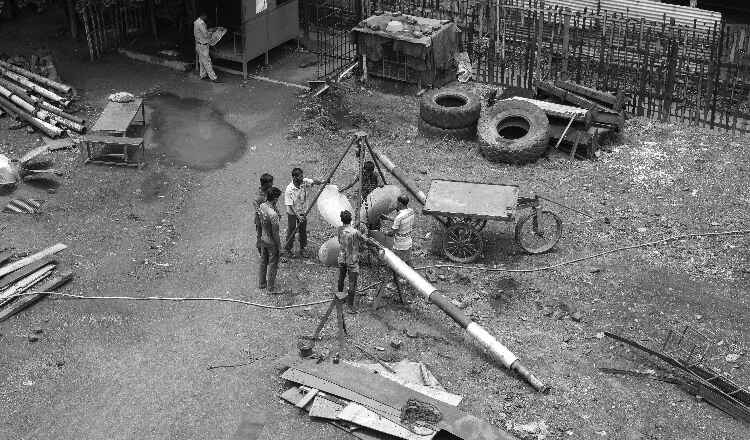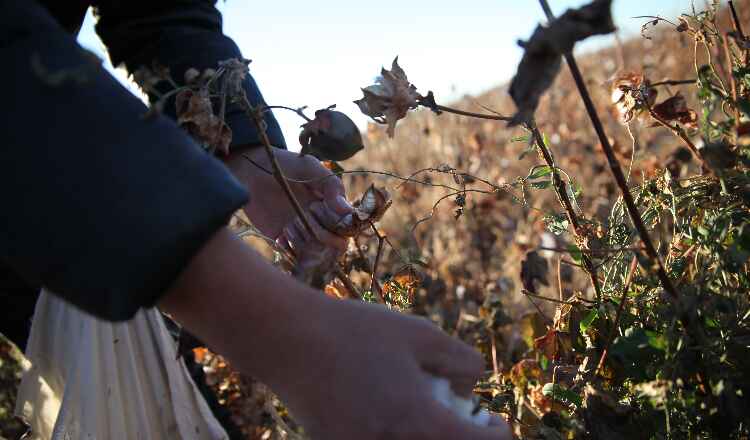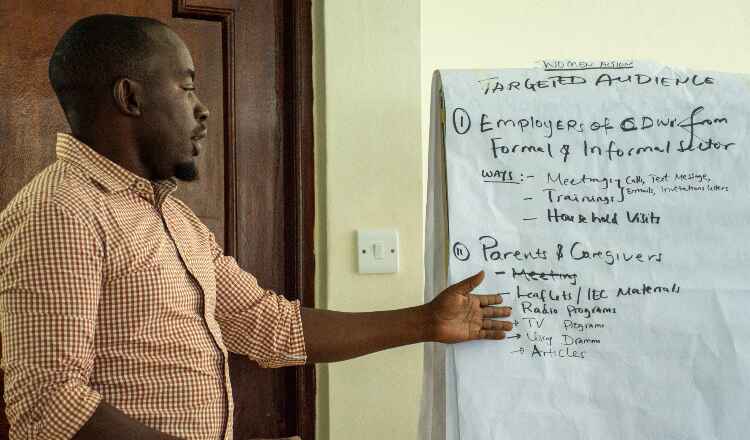Today marks the International Day for the Abolition of Slavery. This day is focused on countering contemporary forms of slavery, such as forced labour, debt bondage, forced marriage, and human trafficking.
In September this year, the new Global Estimates of Modern Slavery were released by Walk Free, the International Labour Organisation (ILO) and the International Organization for Migration (IOM).
Concerningly, the Estimates indicate that nearly 50 million people are now living in modern slavery, showing that modern slavery is still on the rise. This is driven in part by the large-scale crises unfolding worldwide – among them COVID-19, conflict, and the climate crisis. These have intensified the underlying drivers of slavery, which include poverty, discrimination, and rising displacement.
In this blog, we explore some key findings from the Estimates on modern slavery, and how we’re working globally, as a movement, to combat it.

The figures – released every five years – are the best data available on the global scale and distribution of modern slavery. Gathering data on slavery is notoriously challenging because of its hidden nature, so the release of these Estimates is an important milestone and a valuable tool for organisations like us, who are trying to persuade powerholders to act.
What is modern slavery and how do the Global Estimates define it?
The term ‘modern slavery’ is not defined in law. Instead, it is an umbrella term that refers to a broad range of situations where an individual is exploited by others, for personal or commercial gain. Whether tricked, coerced, or forced, they lose their freedom.
This includes, but is not limited to, slavery and slavery-like practices, human trafficking, and forced labour.
In order to measure modern slavery effectively, the Global Estimates focus on two key forms: forced labour and forced marriage.
They split forced labour into two categories: privately-imposed forced labour (divided into two sub-types: forced labour exploitation and forced commercial sexual exploitation of adults/commercial sexual exploitation of children) and state-imposed forced labour.
The other main concepts of modern slavery (slavery, institutions and practices similar to slavery) are not included explicitly in the Global Estimates but are closely linked to them.
Forced marriage is defined in the Global Estimates as situations where a person has been forced to marry without their consent.
An estimated 22 million people are reported to be in forced marriage – a 6.6 million increase since 2016. Over 2/3 of all those forced to marry are female, which is equivalent to 14.9 million people. These figures are considered to be conservative.
Debt bondage – exploitation of migrant workers at the 2022 Qatar World Cup

The Global Estimates indicate that 1/5 of people in forced labour exploitation in the private economy are in situations of debt bondage.
In other words, they’re being forced to work for no or extremely low wages to repay the debts they contracted to secure the job (e.g. paying very high recruitment fees). This is often weighted so that a worker amasses debt no matter how hard they work.
This is the situation faced by thousands of migrant workers recruited to work in Qatar for the 2022 World Cup – burdened with extortionate fees, paid a pittance and subject to wage theft, they are left trapped and exploited.
The Estimates show that adult migrant workers are more than three times more likely to be in forced labour in the private sector than those who are not migrants.
The Qatar World Cup is neither the first, nor an isolated example of egregious violations of migrant workers’ rights in the country. It is time for these practices to end.
Forced labour of children – Sir Mo Farah’s story
According to the Global Estimates, more than 12 million of the people in modern slavery are reported to be children, according to the Global Estimates. This includes a total of 3.3 million children in situations of forced labour. Many more still are in forced child marriage, although the statistics are much harder to capture.
Forced child labour is taking place all around the world, including up and down the UK.
In a disclosure that shocked the nation, in July 2022 British Olympic champion Sir Mo Farah revealed that he had been trafficked into the UK as a young child and forced to work as a domestic servant. He explained:
“I wasn’t treated as part of the family. I was always that kid that did everything.
If I wanted food in my mouth, my job was to look after those kids. Shower them, cook for them, clean for them.
And she said: “If you ever want to see your family again, don’t say anything.”
The Global Estimates are clear that the numbers above, whilst already alarming, are likely to be just the tip of the iceberg.
Take this short test to see how aware you might be of the signs of slavery.
State-imposed forced labour – abuses in Turkmenistan and the Uyghur Region

The Global Estimates indicate that 3.9 million people are in state-imposed forced labour.
Anti-Slavery International has worked on tackling this issue for over a decade, including formerly in Uzbekistan and today in Turkmenistan and the Uyghur Region in China.
What is state-imposed forced labour and how do the Global Estimates define it?
The Estimates break down state-imposed forced labour into:
- Abuse of compulsory prison labour -> here the Estimates include Uyghur forced labour in China. An estimated 1 million to 1.8 million people from the Uyghur population and other Turkic and Muslim-majority peoples are being arbitrarily detained, as part of a broader system of persecution. Forced labour in this system of persecution involves both detainee labour inside internment camps and multiple forms of involuntary labour at workplaces across the region and even in other parts of China
- Abuse of conscription -> this occurs when states force people who have been conscripted to perform work not of a “purely military character”. The Estimates give the examples of Egypt, Chad and Myanmar, where conscripts are required to perform a variety of non-military tasks
- Compulsory labour for the purpose of economic development, and abuse of the obligation to perform work as part of normal civic obligations or minor communal services -> here the Estimates include the forced participation in Turkmenistan of public servants, private sector workers, and students in cotton harvesting for the government, almost always for little or no compensation, under threat of substantial fines for refusal
- Legal reforms -> here the Estimates note recent successes in Uzbekistan in eradicating systemic forced and child labour associated with the harvest in 2021. Unfortunately, the initial findings of independent civil society monitoring of this 2022’s harvest found that, although political will to end forced labour remains strong, the progress achieved so far could be in jeopardy. Therefore, the reform must be reinforced and global companies must support responsible sourcing from the country
In China, the Global Estimates specifically categorise this practice as a form of racial or religious discrimination because its directed specifically at Uyghur and other predominantly Muslim groups.
An ‘early warning and urgent action’ decision by the UN’s committee on racial discrimination recently raised this directly with the government of China and referred it for further scrutiny at the UN. It is key that international pressure such as this continues, alongside action at the national level.
Sign this petition for a new law to hold business and the public sector in the UK to account for sourcing materials produced by the forced labour of Uyghurs.
What can we do?

The 2022 Global Estimates are a call to action for all of us. They tell us that modern slavery is everywhere.
With compounding crises – from armed conflict, to climate change, to COVID-19 – shaking countries and communities, weak laws, demand for cheap products, and growing corporate power, these Estimates call for us to use all the tools we have to shift the dial on slavery.
For us, the international advocacy team, one of the best tools in our toolbox is the law.
Thanks to the tireless work of the anti-slavery movement, there are a raft of international standards that now hold countries to a higher standard in combatting slavery. They aren’t perfect – part of our work is to make them stronger and keep them relevant – but they are powerful.
And so, as we push governments to sign up to the strongest laws – working with affected communities, other partners and supporters – and then deliver on them, these statistics act as both fuel and ammunition.
Modern slavery is growing, it’s urgent and it’s everywhere. We want to make slavery everyone’s concern, we need everyone to be talking about it, sharing these figures, and growing the collective expectation of our governments and our retailers.
As the Global Estimates report states: “promises and statements of good intent are not enough”.
So, with 50 million people still in slavery this International Day for the Abolition of Slavery, what bigger reason to act?
Join the movement today.